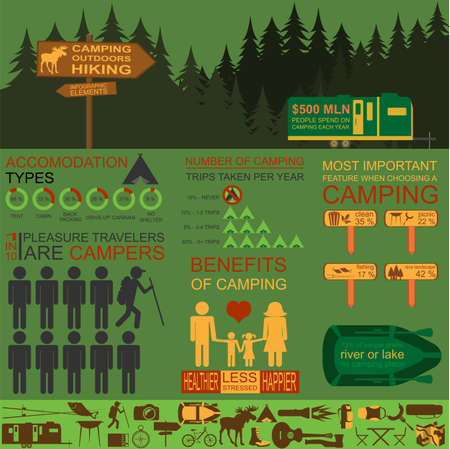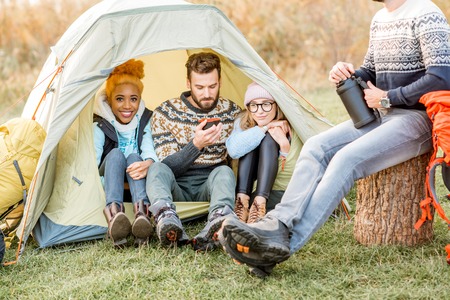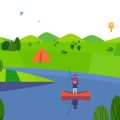1. Understanding Ethical Wildlife Observation
When youre out camping in the U.S., one of the most exciting parts is spotting wildlife in their natural environment. But before you snap that photo or get a closer look, its important to understand what it means to observe wildlife ethically. Ethical wildlife observation is about more than just watching animals — its about doing so in a way that protects them, keeps you safe, and respects their habitat.
Why Ethical Observation Matters
Ethical wildlife observation plays a big role in conservation efforts. When we respect animals and their space, we help preserve natural behaviors and reduce stress on wildlife populations. It also helps ensure these amazing creatures will still be around for future generations to enjoy.
Three Main Reasons to Observe Ethically
| Reason | Why It’s Important |
|---|---|
| Conservation | Reduces human impact and helps protect animal populations. |
| Safety | Keeps both people and animals from harm by avoiding dangerous encounters. |
| Respect for Habitats | Minimizes damage to ecosystems where animals live and thrive. |
What Does Ethical Observation Look Like?
It’s simple: observe from a distance, stay quiet, don’t feed the animals, and never try to touch or chase them. That selfie with a bear might look cool on Instagram, but it can lead to serious consequences for both you and the bear. Wild animals are just that — wild — and they need space to live without interference.
Quick Tips for Respectful Wildlife Watching:
- Keep your distance: Use binoculars or zoom lenses instead of getting close.
- Avoid sudden movements or loud noises: Stay calm and quiet so you don’t startle animals.
- Stick to trails and campsites: This helps protect fragile habitats and reduces your impact on the environment.
- Don’t leave food out: Human food can harm animals and encourage dangerous behavior like raiding campsites.
- Learn before you go: Research local wildlife rules in national parks or forest areas — different places have different guidelines.
By understanding what ethical wildlife observation really means, youre already taking the first step toward being a responsible camper and nature lover. In the next section, we’ll dive into how to prepare for wildlife encounters before you even leave home.
2. Choosing the Right Campsite with Minimal Impact
When it comes to camping and observing wildlife in an ethical way, one of the most important decisions you’ll make is where to set up your tent. Picking the right campsite helps protect local ecosystems and ensures that animals can go about their lives undisturbed. Here’s how to choose a low-impact campsite that aligns with Leave No Trace principles and keeps wildlife safe.
Stick to Designated Camping Areas
In most national parks, forests, and public lands across the U.S., there are clearly marked designated campsites. These areas are specifically chosen to reduce environmental impact and are often equipped with fire rings, bear-proof storage, and sometimes even toilets.
Using these designated areas helps:
- Prevent damage to fragile habitats
- Minimize soil erosion and vegetation loss
- Keep human activity predictable for local wildlife
Avoid Wildlife Corridors and Sensitive Zones
Even if youre not in a developed campground, avoid setting up camp near animal trails, water sources, or dense vegetation where animals might feed or rest. Respecting these spaces gives wildlife the room they need to thrive without interference.
Examples of Sensitive Areas to Avoid:
| Type of Area | Why to Avoid |
|---|---|
| Near rivers or lakes | Animals rely on water sources for drinking—human presence can disrupt this essential behavior. |
| Dense bushes or forest edges | These areas often serve as shelter or nesting spots for birds and small mammals. |
| Narrow game trails | Wildlife uses these paths regularly; camping nearby may block access or cause stress. |
Follow the 200-Foot Rule
If youre backcountry camping, aim to set up your tent at least 200 feet away from lakes, streams, and trails. This distance reduces your footprint on natural resources and lowers the chance of scaring off animals who depend on those areas.
Know Before You Go: Local Regulations Matter
Campsite rules can vary widely depending on where you’re camping. Some areas may have restrictions during breeding seasons or limitations on campfire use due to high fire risk. Always check with park rangers or official websites before heading out.
Pro Tip:
If youre not sure where to camp ethically, ask a ranger! They can point you toward low-impact sites that offer great opportunities for wildlife viewing without causing harm.
Selecting a responsible campsite is one of the easiest ways you can help protect America’s wild places while still enjoying all the beauty they have to offer.

3. Wildlife Watching Best Practices
When youre camping in the U.S., seeing wildlife in its natural habitat can be one of the most exciting parts of your trip. But it’s important to do it in a way that keeps both you and the animals safe. Here are some best practices for observing wildlife respectfully and responsibly.
Keep a Respectful Distance
Getting too close to wild animals can be dangerous for both you and them. Use binoculars or a camera with a zoom lens instead of approaching. The National Park Service recommends staying at least 25 yards (about 23 meters) away from most wildlife, and 100 yards (about 91 meters) from predators like bears and wolves.
Recommended Distances from Wildlife
| Animal Type | Minimum Distance |
|---|---|
| Deer, Elk, Moose | 25 yards (23 meters) |
| Bears, Wolves | 100 yards (91 meters) |
| Birds | 25 yards (23 meters) |
Avoid Flash Photography
Flash photography can startle animals, disrupt their behavior, and even cause stress. Always turn off your flash when taking pictures of wildlife. Natural lighting or long-exposure settings are better choices for capturing those memorable moments.
Never Feed Wildlife
Feeding wild animals might seem harmless, but it can actually be very harmful. It teaches animals to rely on humans for food, which can lead to aggressive behavior and poor health. Human food is not suitable for wild diets and can make animals sick.
Why You Shouldn’t Feed Wildlife
- Health Risks: Human food lacks proper nutrients for animals.
- Behavioral Changes: Animals may lose their fear of people.
- Safety Issues: Fed animals may become aggressive or reliant on campers.
Stay Quiet and Calm
Loud noises can scare off wildlife or interrupt their natural behaviors like feeding, mating, or caring for young. Speak softly, avoid sudden movements, and tread lightly on trails to reduce your impact.
Stick to Trails and Campsites
Wandering off-trail can disturb animal habitats and nesting areas. Stick to designated paths and campsites whenever possible to minimize your footprint on the environment.
Use Wildlife-Friendly Gear
If youre serious about wildlife watching, consider bringing along gear that helps you observe without interfering:
- Binoculars: See animals up close without getting too near.
- Cameras with Zoom Lenses: Capture detailed photos from a safe distance.
- Field Guides: Help identify species and understand their behavior.
- Neutral-Colored Clothing: Helps you blend into the environment.
Practicing these habits not only protects wildlife but also gives you a more authentic and rewarding experience during your camping adventure in the great outdoors of the U.S.
4. Understanding Regional Wildlife and Regulations
Before heading out on your camping trip, it’s important to know what types of wildlife you might encounter in the area. The U.S. is home to a wide variety of ecosystems, from dense forests to arid deserts, and each region has its own unique set of animals and environmental rules. Understanding these differences helps you enjoy observing wildlife safely, respectfully, and within legal boundaries.
Get to Know Local Species
Different regions mean different animals. A black bear in the Smoky Mountains behaves differently than a desert tortoise in Arizona. Learning about local species not only enhances your experience but also helps protect both you and the wildlife.
| Region | Common Wildlife | Key Behaviors |
|---|---|---|
| Pacific Northwest | Black bears, elk, bald eagles | Active at dawn/dusk; avoid human interaction |
| Southwest U.S. | Coyotes, rattlesnakes, roadrunners | Nocturnal; sensitive to temperature changes |
| Southeast U.S. | Alligators, deer, armadillos | Crepuscular activity (active at twilight) |
| Northeast U.S. | Moose, foxes, owls | Migratory patterns; seasonal movement |
Pay Attention to Seasonal Behaviors
Many animals behave differently depending on the time of year. For example, some may be more aggressive during mating season or more elusive during hibernation periods. Knowing this can help you plan when and where to observe wildlife with minimal disturbance.
- Spring: Breeding season for many mammals and birds — keep distance from nests and dens.
- Summer: Peak activity for most animals — early mornings and late evenings are best for viewing.
- Fall: Migration season — watch for flocks of birds or moving herds.
- Winter: Hibernation for bears and some rodents — sightings are rare but tracks can still be found.
Follow U.S. Laws and Park Guidelines
The U.S. has strict laws protecting wildlife and natural habitats. Federal laws like the Endangered Species Act make it illegal to disturb certain animals. National parks have specific rules about how close you can get to wildlife, what you can feed (hint: nothing!), and even which trails you can take during breeding seasons or fire risks.
Quick Tips for Staying Legal and Respectful:
- Always stay on marked trails unless otherwise permitted.
- Use binoculars or a zoom lens instead of getting physically close to animals.
- Avoid making loud noises or using flash photography around wildlife.
- Check the official website of the park or forest youre visiting for up-to-date rules and alerts.
By understanding local species, their seasonal habits, and the regulations that protect them, youll be better prepared to enjoy ethical wildlife watching while camping anywhere in the U.S.
5. Using Gear and Technology Responsibly
Having the right gear can make wildlife watching more enjoyable, but it’s important to use these tools in a way that respects animals and their natural habitats. Whether youre using binoculars, cameras, or smartphone apps, your goal should be to observe without disturbing.
Binoculars and Spotting Scopes
Binoculars are one of the best tools for ethical wildlife observation. They let you see animals up close without having to physically get close, which helps avoid stressing them out.
Tips for Using Binoculars
- Choose a pair with 8x or 10x magnification for general use.
- Practice at home so you’re comfortable focusing quickly in the field.
- Avoid sudden movements while viewing animals to prevent startling them.
Cameras and Photography
Taking pictures of wildlife is a great way to capture memories, but always prioritize the animals well-being over getting the perfect shot.
Photography Do’s and Don’ts
| Do | Don’t |
|---|---|
| Use a zoom lens to maintain distance | Use flash near animals, especially at night |
| Stay quiet and move slowly | Chase or bait animals for a better photo |
| Edit photos later instead of trying risky angles | Block paths or nests for a shot |
Field Guides and Mobile Apps
Field guides and nature apps can help you identify species and learn about their behaviors. This knowledge allows you to better appreciate what you’re seeing and behave appropriately around different types of wildlife.
Recommended Resources
- Sibley Field Guide: Great for identifying birds in North America.
- iNaturalist: An app that lets you record sightings and connect with other nature lovers.
- Mammal Tracks & Sign: Useful for spotting evidence of elusive animals.
General Tech Etiquette in the Wild
The convenience of technology shouldn’t come at the cost of disturbing nature. Keep devices on silent mode, avoid loud music, and turn off unnecessary lights—especially at night when many animals are active. Always remember: just because you can doesn’t mean you should.
Your Responsibility as an Observer
The tools we bring along can enhance our experience, but they also come with responsibility. Using gear responsibly means thinking about how your actions affect the environment and the creatures living there. Stay aware, be respectful, and enjoy the beauty of wildlife from a safe—and ethical—distance.


